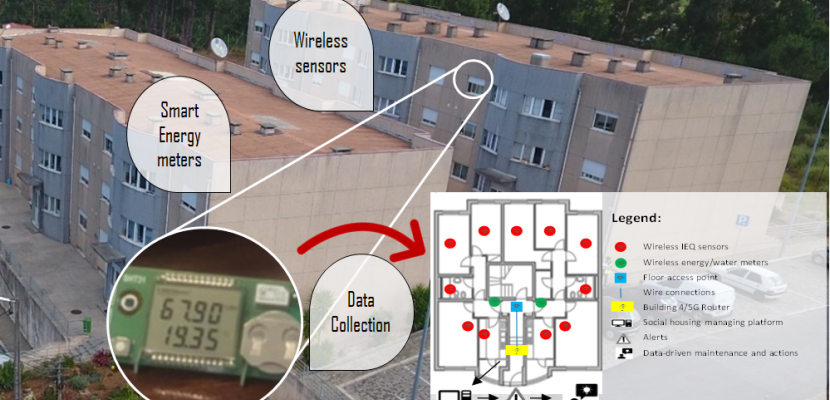
Real-time Hygrothermal condition monitoring on municipal infrastructures retrofit works

About this good practice
The proposed good practice is to develop a building management system, which consists on the implementation of equipment on public buildings in order to monitor real time hygrothermal conditions.
The collected data would be used to adapt the retrofit work to each building and to assist specialists in decision making related to, for example, changes in ventilation strategies and possible implementation of renewable energy systems (for heating or electrical generation). The monitoring plan and subsequent dynamic simulation will reduce performance gaps between the simulated data and the data measured after the renovation takes place.
Originally the rehabilitation process was only meant to follow Energy Performance Directive of Buildings norms and with the covid-19 pandemic, some doubts arose on the quality of the original municipality planned retrofit work. Changes on the occupation and permanence index caused by the covid-19 pandemic made us realize that the condition of these households needs to be taken in especial consideration. These buildings occupants (economically debilitated) are expected to have these conditions aggravated in order to meet basic living/working conditions on their households.
It’s essential to know the real conditions of the public buildings to guarantee that the retrofit works result as expected. Beyond the knowledge of the buildings passive and active systems, the habits of the occupants of social housing must be known prior to any renovation work.
Expert opinion
Resources needed
Teams of specialized human resources to install equipment, analyze data, evaluate and develop building retrofit work plans.
Equipment such as: software, sensors, smart meters and Renewable Energy Source Systems.
Evidence of success
A case study proposed implementing a monitoring plan in the rehabilitation work, including pre- & post-intervention phases, to assure basic thermal comfort needs. In social housing context, low energy renovations should be first to improve occupants’ comfort instead of reducing energy consumption since energy used for heating and cooling is punctual or non-existent.
As a complement, a study of the potential use of PVs showed a potential energy purchase reduction of 15%.
Potential for learning or transfer
The progressive implementation of monitoring plans as a tool to evaluate the conditions in social housing or other buildings, before and after renovation, represent significant opportunities to improve energy efficiency and thermal comfort. This will have an impact in population health and wellbeing. An in-depth characterization of the pre-renovation conditions: ambient, thermal comfort and energy consumption can be used to identify the most relevant influent factors.
The use of this data with the support of building energy simulation programs to model the occupants profiles and the projected renovation solutions can provide a vision of the expected and adjusted results of the intervention and the benefits that come from it, and based on the results analysis propose identify the best renovation solutions.
This will bring awareness to the need to develop more detailed and adapted projects, using tools such as sensors and dynamic simulation software to improve renovation projects.
Further information
Website
Good practice owner
You can contact the good practice owner below for more detailed information.
Municipality Vila Nova de Gaia | Engineering Faculty of University of Porto (FEUP)

